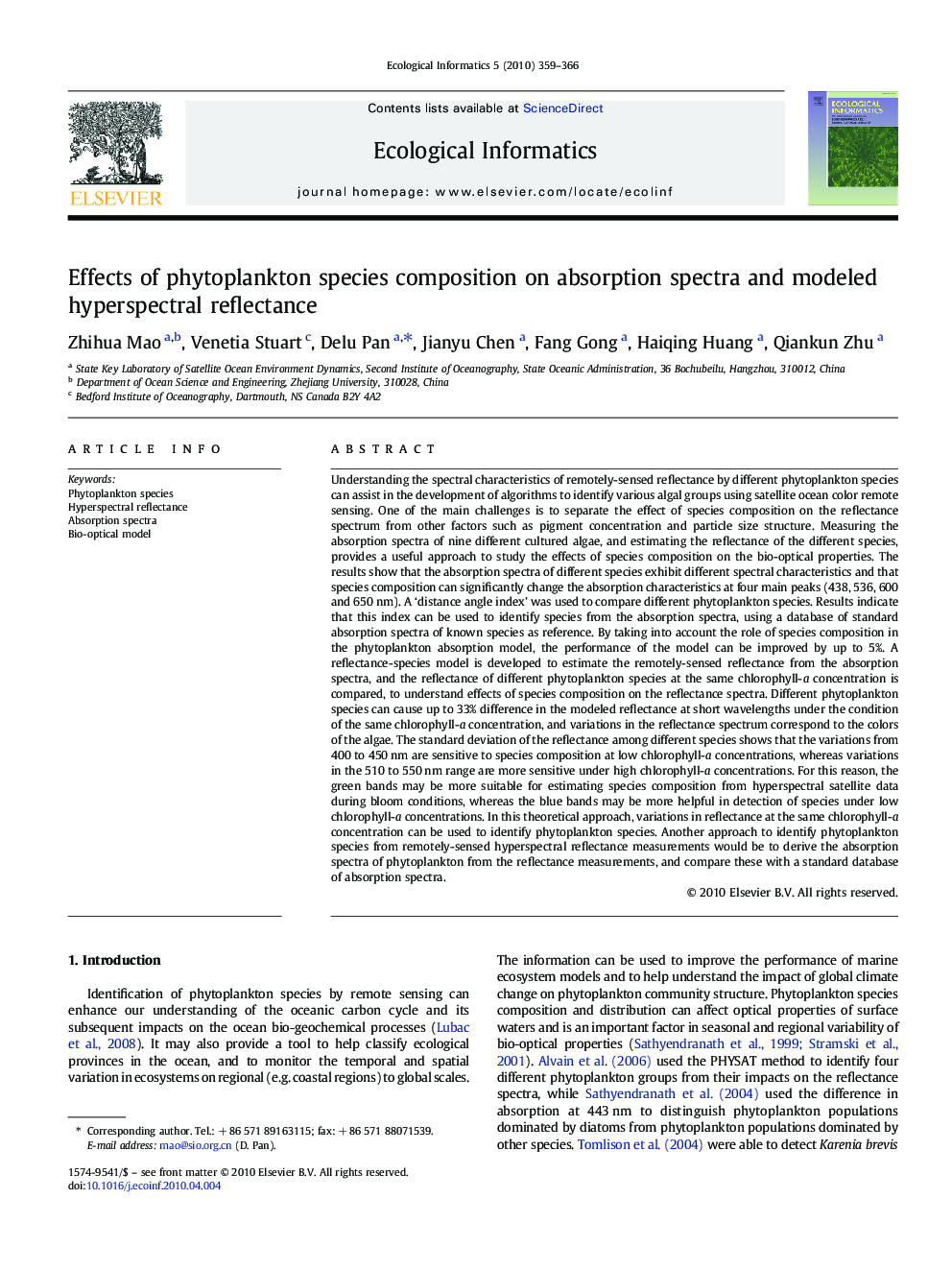| کد مقاله | کد نشریه | سال انتشار | مقاله انگلیسی | نسخه تمام متن |
|---|---|---|---|---|
| 4375275 | 1303256 | 2010 | 8 صفحه PDF | دانلود رایگان |

Understanding the spectral characteristics of remotely-sensed reflectance by different phytoplankton species can assist in the development of algorithms to identify various algal groups using satellite ocean color remote sensing. One of the main challenges is to separate the effect of species composition on the reflectance spectrum from other factors such as pigment concentration and particle size structure. Measuring the absorption spectra of nine different cultured algae, and estimating the reflectance of the different species, provides a useful approach to study the effects of species composition on the bio-optical properties. The results show that the absorption spectra of different species exhibit different spectral characteristics and that species composition can significantly change the absorption characteristics at four main peaks (438, 536, 600 and 650 nm). A ‘distance angle index’ was used to compare different phytoplankton species. Results indicate that this index can be used to identify species from the absorption spectra, using a database of standard absorption spectra of known species as reference. By taking into account the role of species composition in the phytoplankton absorption model, the performance of the model can be improved by up to 5%. A reflectance-species model is developed to estimate the remotely-sensed reflectance from the absorption spectra, and the reflectance of different phytoplankton species at the same chlorophyll-a concentration is compared, to understand effects of species composition on the reflectance spectra. Different phytoplankton species can cause up to 33% difference in the modeled reflectance at short wavelengths under the condition of the same chlorophyll-a concentration, and variations in the reflectance spectrum correspond to the colors of the algae. The standard deviation of the reflectance among different species shows that the variations from 400 to 450 nm are sensitive to species composition at low chlorophyll-a concentrations, whereas variations in the 510 to 550 nm range are more sensitive under high chlorophyll-a concentrations. For this reason, the green bands may be more suitable for estimating species composition from hyperspectral satellite data during bloom conditions, whereas the blue bands may be more helpful in detection of species under low chlorophyll-a concentrations. In this theoretical approach, variations in reflectance at the same chlorophyll-a concentration can be used to identify phytoplankton species. Another approach to identify phytoplankton species from remotely-sensed hyperspectral reflectance measurements would be to derive the absorption spectra of phytoplankton from the reflectance measurements, and compare these with a standard database of absorption spectra.
Journal: Ecological Informatics - Volume 5, Issue 5, September 2010, Pages 359–366